Newly gifted mural in KC reflects a great man’s path, but with so much more to tell
- Oops!Something went wrong.Please try again later.
As art subjects go, the one depicted in a 12-foot-wide mural of colorful and overlapping images, set to be gifted Saturday to the Black Archives of Mid-America in Kansas City, may seem prosaic:
It’s about the life of a bank, which sounds about as dull as an old penny — until the viewer knows that it isn’t about just any bank. It’s about the Douglass State Bank, the first Black-owned bank in the state of Kansas and, thus, about its founder, H.W. Sewing, a man largely forgotten now but one whose journey is perhaps too big even for a mural.
“He believed that the soul of Frederick Douglass was in that bank,” said his grandniece, Joy Sewing, who is donating the mural. (Now a columnist at the Houston Chronicle, she worked at The Star in the 1990s.)
“His whole mission was to uplift the Black race and to provide economic freedom.”
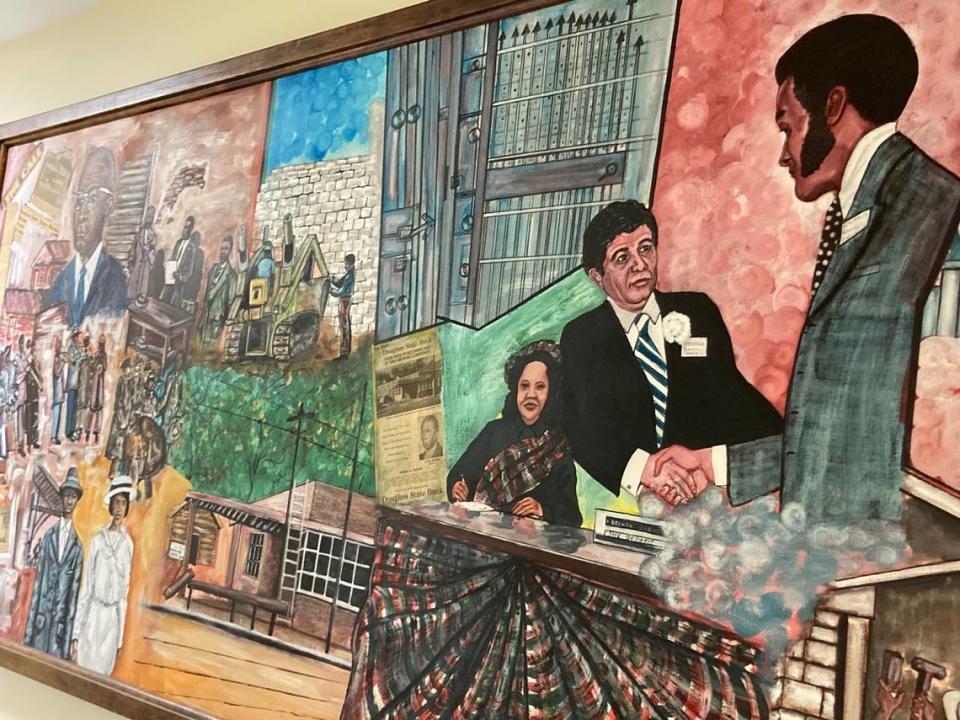
The mural was painted in 1974, as a figure with cool, long sideburns attests.
Over in the upper left corner and also to the right is Henry Warren Sewing — lean, with serious eyes behind glasses, a line for a mouth. An eminent figure in a dark suit, his loans to businesses and homeowners from Douglass State at 1314 N. Fifth St. changed the lives of generations of Black families in Kansas City, Kansas, and beyond.
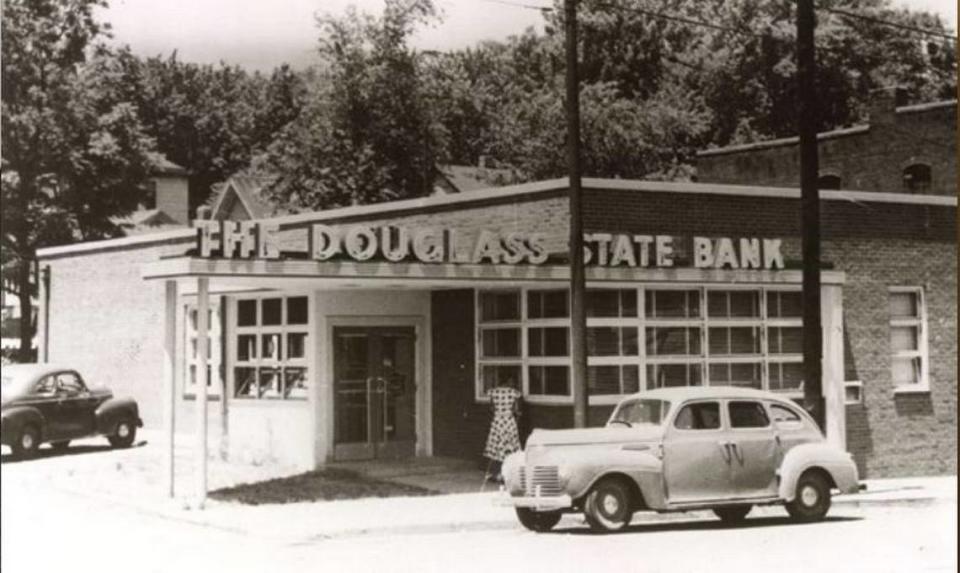
What is only hinted at is the journey. Raised poor, the son of a Texas sharecropper, he was born in 1891 and named for an uncle, Henry Brooks, remembered as being so brave he refused to be whipped by his enslavers.
As a boy, Sewing picked cotton, attended church and school. He was 24 by the time in 1915 he graduated from Tillotson College, now Huston-Tillotson University, where he met his wife. He then went on to Fisk University in Nashville.
“When I got on the campus, I had 25 cents,” Sewing, at age 85, recalled in an interview taped in 1976, with a transcript kept by the Kansas City Public Library. He graduated and become an Austin public school teacher, paid half the salary of others.
“Because one was colored and one was white,” he said. “They made no bones about it. That’s the way the system worked.”
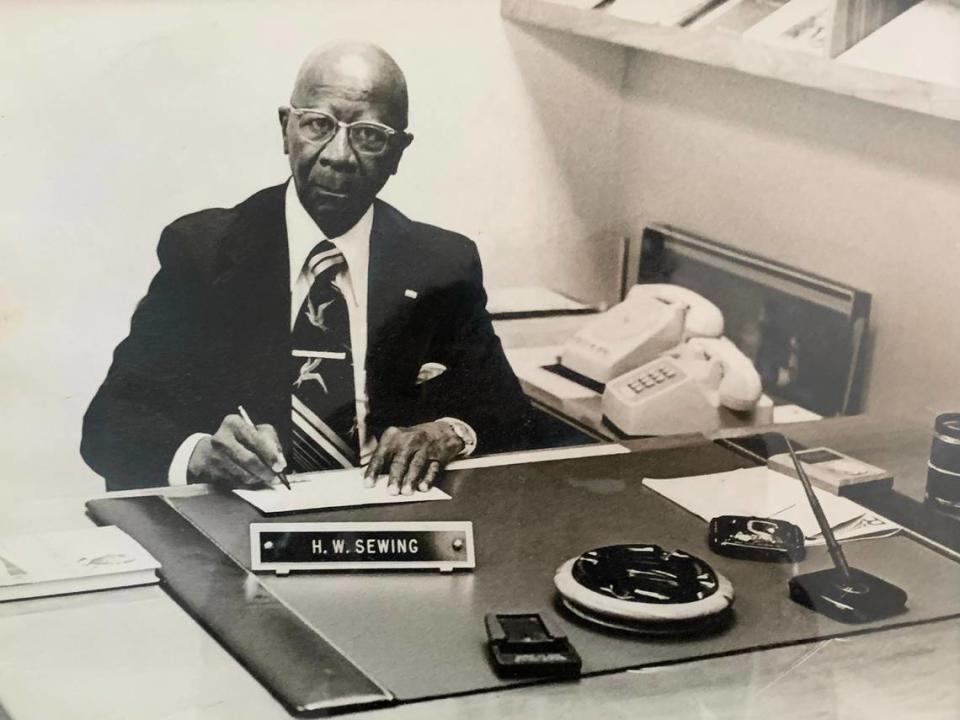
Seeking a better future, he took a correspondence course in accounting, traveled to Chicago, found no job, then made his way south, stopping in Kansas City. He got work in a stockroom before becoming an instructor at Western University in KCK’s Quindaro area. There, he had a friend who was about to get what he felt was a substandard insurance policy from a substandard company.
Sewing, instead, called the Standard Life Insurance Co. A salesman showed up and wrote up a new policy. What happened next changed Sewing’s life.
“The man that was there — he was one of the field men,” Sewing recalled. “He said, ‘You’d make a good salesman.’” That was 1922.
“I wrote more business than two of the men that were in the office and running the office there.”
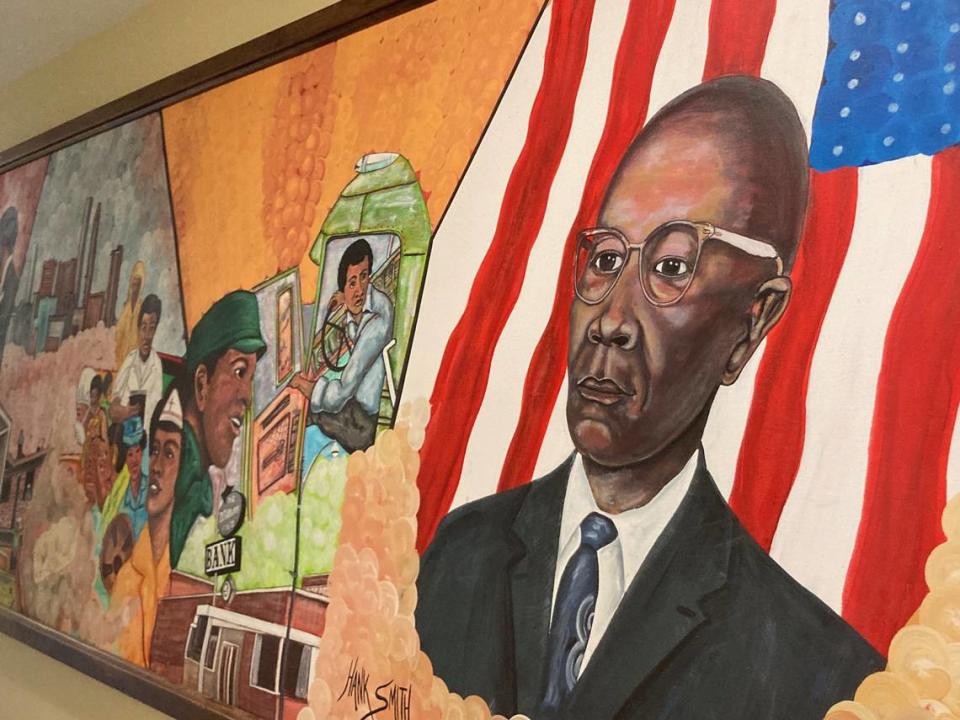
Sewing prospered, even during the Great Depression, rising in esteem through Kansas City’s business ranks with Standard Life, National Benefit Life, Atlanta Life Insurance Co., and others. He became a leader on civic organizations that included the Monrovian Club, the Fisk Club, the United Negro College Fund, and YMCA. In, 1932, recognizing the unfair treatment of Black people, Sewing with four friends and $200 opened the Sentinel Loan Co., located in a room at The Kansas City Call newspaper.
Fifteen years later, he and others traveled to Topeka to talk to a banking regulator.
“We said to him that we know that there’s already too many banks in Kansas City,” Sewing recounted, “but we also know that a large segment of Kansas City doesn’t have adequate banking services — and you know the reason for that as well as we do.”
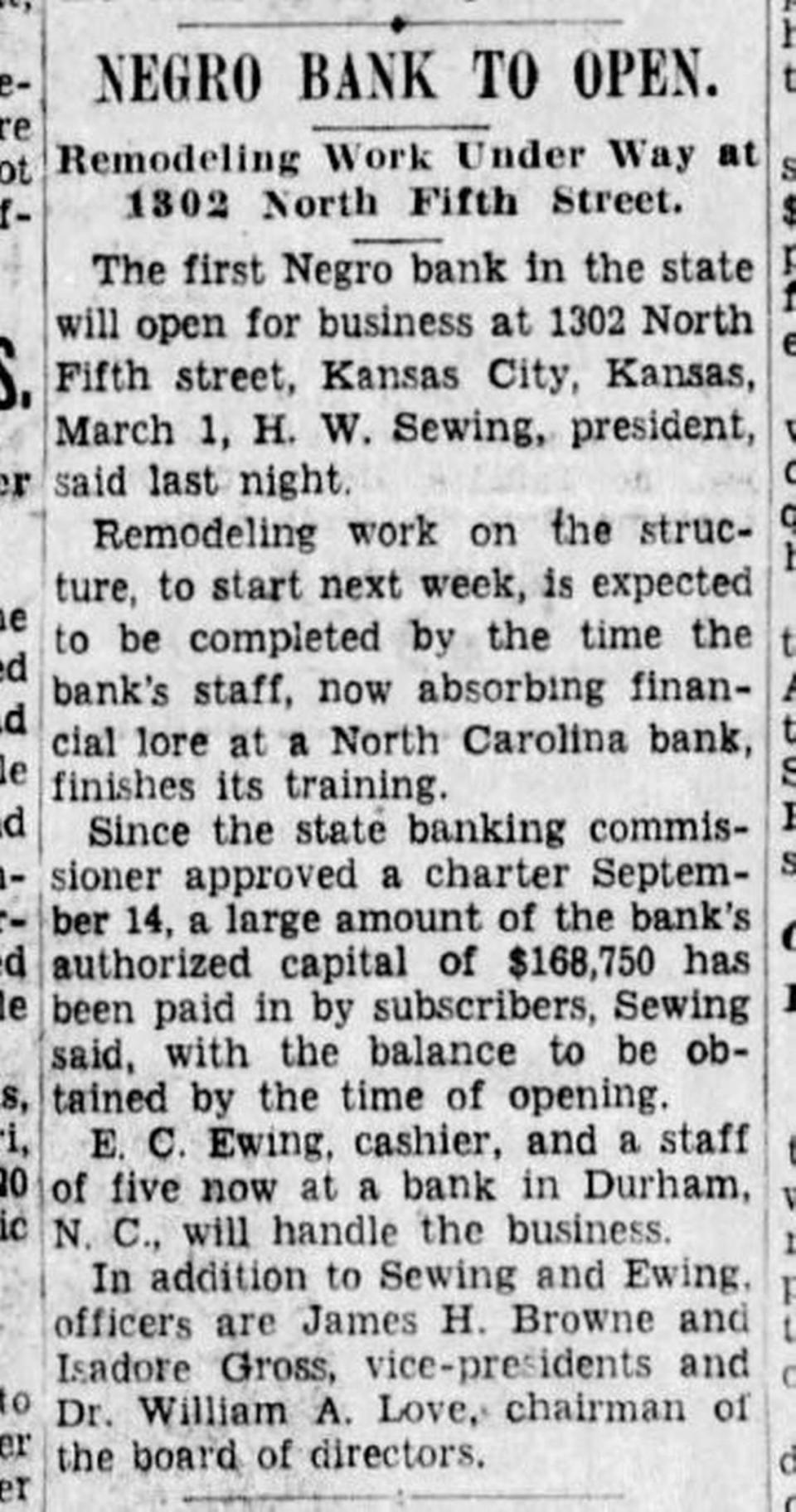
The parade, with a marching band and cars draped in bunting, to celebrate the opening of the Douglass State Bank on Aug. 25, 1947, began at Lincoln High School in Kansas City and traveled to Sumner High School in Kansas City, Kansas. The bank would underwrite countless loans, including in 1952 financing the construction of 150 homes in the Brentwood Hills subdivision of Kansas City, Kansas.
“If Frederick Douglass were alive today he would smile upon this undertaking,” a speaker, a banker from North Carolina said at the dedication. The news story from that day is embedded into the mural. “For the famed abolitionist encouraged John Brown to come to Kansas to fight slavery and have the state come in as a free territory. In fact, Douglass State is a continuation of the things Frederick Douglass fought for.”
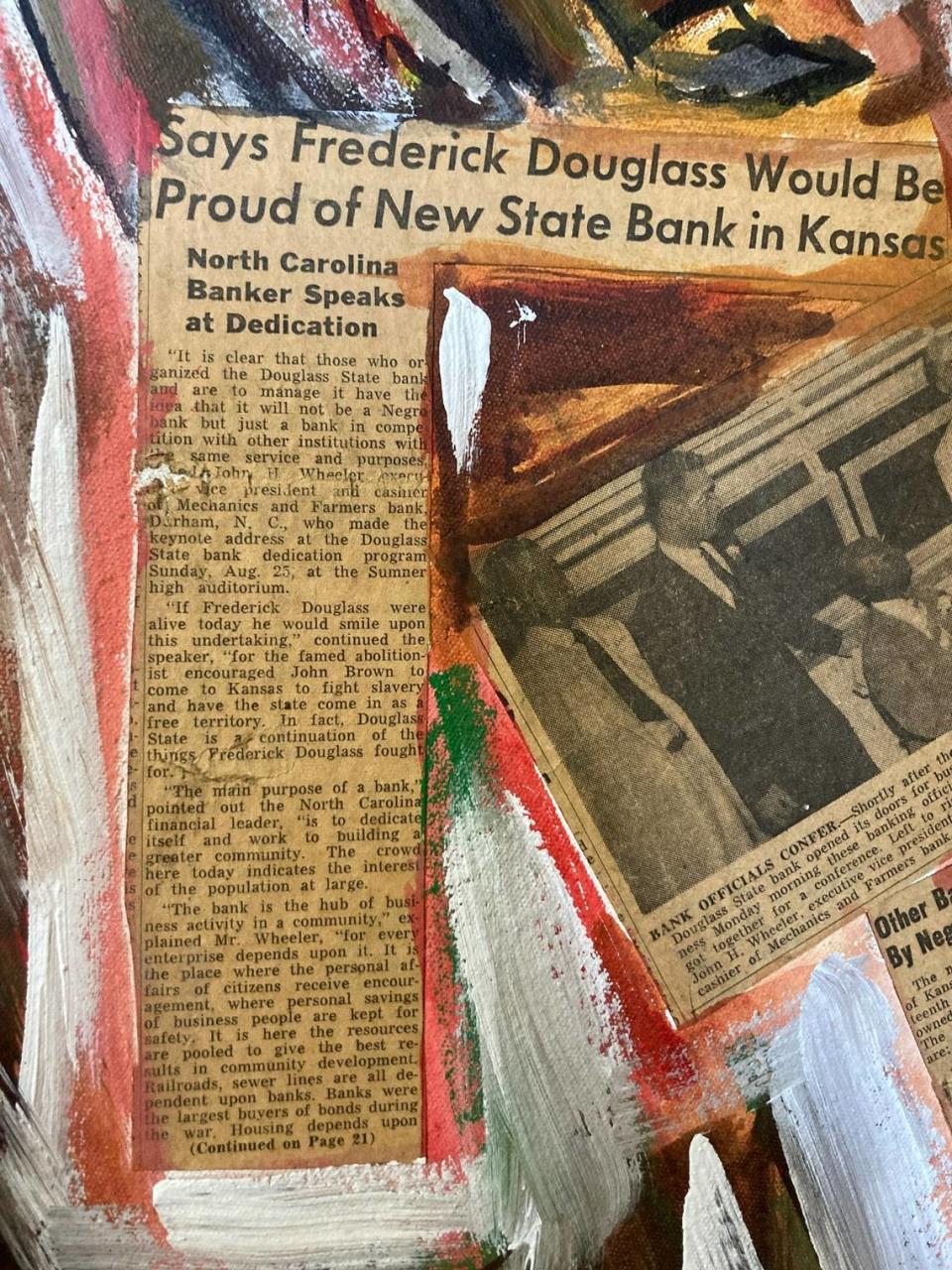
Sewing died in 1980 at age 89. Douglass State closed in 1983. Its location eventually became a Liberty Bank. The mural, painted by a local artist, Hank Smith, had hung there for nearly 50 years, until about two years ago when, through a friend, Joy Sewing came to know of its existence.
“The Liberty Bank gave it to us,” she said, and the family decided the Black Archives would be the best place for it. “We just want to make sure that his legacy and history are remembered.
“It is pretty incredible that a Black man, born in 1891, had so much vision to see past all the atrocities and the turmoil and the oppression that was happening around him.
“One thing he knew is that Black people at that time were not given any opportunities to get loans to buy homes and increase their wealth. It was important for him to do that.”
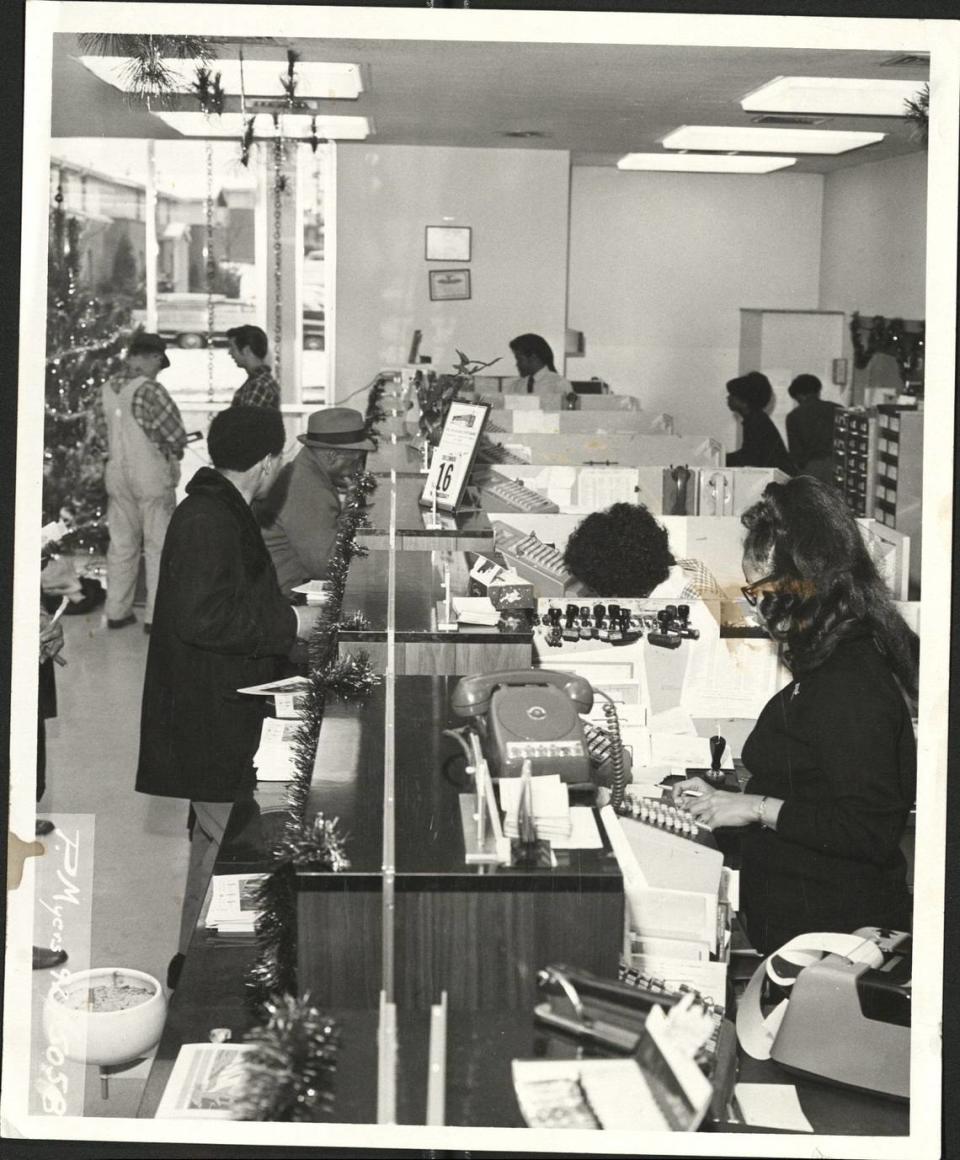
The mural dedication is 5 p.m. Saturday, March 16, at the Black Archives of Mid-America, 1722 E. 17th St. Speakers are to include David Haley, a Kansas state senator and nephew of the late Pulitzer Prize-winning author Alex Haley.

